Paving the Way to a Perfect Dose
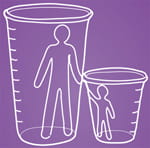 An unprecedented investment fuels Pathology’s new role in providing personalized medicine
An unprecedented investment fuels Pathology’s new role in providing personalized medicine
As advancing technology allows doctors to match treatments to individual patients, the role to be played by hospital pathology services is evolving and growing.
“Our institutional goal of providing more personalized medicine requires a great deal of support – in technology and personal expertise,” says David Witte, MD, Director, Division of Pathology. “Pathology fits into the picture by helping clinicians manage treatment in a more effective way.”
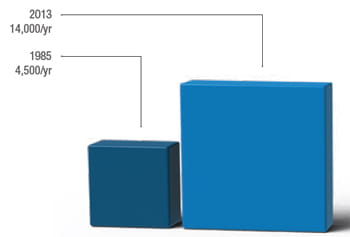 |
|
The Pathology Division has grown from analyzing 4,500 specimens a year in the 1980s to handling 14,000 surgical samples in 2013. |
A CULTURE OF GROWTH
When Witte joined the division in the mid-1980s, the tiny department was staining and analyzing about 4,500 surgical specimens a year. Now, it handles 14,000 surgical samples a year and its viral PCR (polymerase chain reaction) laboratory – established from scratch a decade ago – now conducts more than 60,000 assays a year.
When Witte became division Director in 1998, Pathology had three full-time faculty members; it now has 18 and counting, and has significantly expanded its range of work.
THE MASS SPECTROMETRY ADVANTAGE
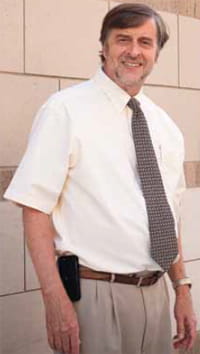 |
|
Under the leadership of Dr. David Witte, our Division of Pathology has invested millions in technology and expertise that enable clinicians to predict the course of illness and treatment. |
Earlier this year, during the division’s Scientific Advisory Committee (SAC) review, the reviewers zeroed in on one service they consider especially rare among pediatric medical centers – its Mass Spectrometry Laboratory.
While other institutions may have one, two or three mass spectrometers in service, Cincinnati Children’s has 10. “We have invested millions over the years in the mass spec lab to add and upgrade equipment. We now have much broader capabilities and state-of-the-art technology,” Witte says.
Mass spectrometry offers a new way to address an old problem in pediatric medicine. Clinicians have long known that absorption and excretion rates for medications can vary widely between full-term newborns and preterm newborns, between children and adolescents and between adolescents and adults. Metabolism rates also vary among individuals even when they share the same age and body mass. But there have been few practical ways to put that knowledge into practice.
“Until recently, drug dosing in children has been educated guesswork,” Witte says. “Clinicians traditionally use weight and sometimes body surface area to calculate a starting dose based on a percentage of the normal adult dose. But this approach was never very accurate because it could not take individual metabolism into account. Now, with mass spectrometry we can.”
BETTER, FASTER TECHNOLOGY
Years of resolution improvements have made mass spectrometers much more effective at distinguishing between compounds of similar molecular weights, which makes them more useful for analyzing complex biological samples such as lipids, organic acids and the metabolites of small-molecule drug compounds.
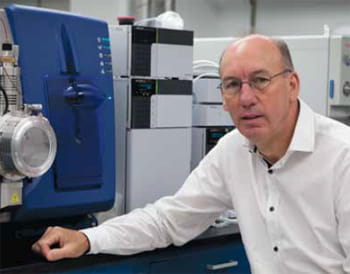 |
|
Dr. Kenneth Setchell and colleagues are developing a test panel that will simultaneously measure blood levels for 42 pain medications. |
“If all you know is that the molecular weight of a target sample is 368 daltons, that could describe 3,000 compounds,” says Kenneth Setchell, PhD, Director of the Mass Spectrometry Laboratory. “Our newest machines can get down to four decimal places, where the probability of different molecules having the same mass is dramatically less, which means the elemental composition and the structure of the molecule can be determined with accuracy.”
Results also can be obtained much faster than in years past. For example, the laboratory at Cincinnati Children’s produces same-day results for children receiving chemotherapy and immunosuppressive
therapy, which can allow doctors to promptly adjust dosages to keep treatments within narrow therapeutic windows. This reduces the risks caused by overdoses and underdoses.
NEW TESTS
With demand rising for personalized analysis to help guide treatment, the division plans to add two more PhD-level experts in mass spectrometry in the coming year, Witte says.
The additional help will be needed as mass spec analysis expands into new areas, such as precision dosing for antibiotics and pain medications. The technology also will help the medical center carry out its role in a new regional policy, which took effect Sept. 1, to perform drug tests for all expectant mothers.
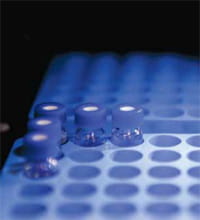 “We are developing methods for monitoring morphine, codeine, oxycodone and other related drugs. Eventually we will have a panel that will simultaneously monitor the levels of 42 pain medications,” Setchell says.
“We are developing methods for monitoring morphine, codeine, oxycodone and other related drugs. Eventually we will have a panel that will simultaneously monitor the levels of 42 pain medications,” Setchell says.
Even as their usefulness expands, mass spectrometers themselves are getting smaller.
Some older mass spectrometers had to be installed in basements because they can weigh several tons. But most newer devices are small enough to sit atop a laboratory bench. Looking forward, researchers in Pathology are working with a device maker to perfect an even smaller mass spectrometer -- small enough to be carried into a patient’s room and fast enough to produce results in minutes.
Between device development and other projects, Witte predicts Cincinnati Children’s will be a leading center for establishing best practices for the use of mass spectrometry in pediatric medicine.
“When I started out in pathology, nobody talked about mass spectrometry because nobody saw the link with clinical care,” Witte says. “But now, we can go beyond simply determining what type of tumor a child has. Using gene sequencing and mass spectrometry analysis, we can say, ‘This is your tumor. Here’s how we predict it will behave.’”
MASS SPECTROMETRY AT CINCINNATI CHILDREN’SThe laboratory uses 10 mass spectrometers to perform hundreds of tests a day to measure thyroid function, complex lipids, steroid levels and more. For years, the Mass Spectrometry Laboratory has been testing samples from children around the world to determine if defects in bile acid metabolism are causing their liver failure. For some, the test results can prevent the ordeal of receiving a liver transplant. Six of these rare genetic defects were discovered here by Kenneth Setchell, PhD, the laboratory’s Director. As the laboratory added mass spectrometers, testing has expanded to include measures of thyroid function, complex lipids, steroid levels and genetic defects involving organic acids and acylcarnitine deficiencies in infants. Now, its fastest-growing service is measuring therapeutic drug levels for organ transplant recipients and children with cancer and other serious conditions. This work also provides data for a variety of clinical trials. |



